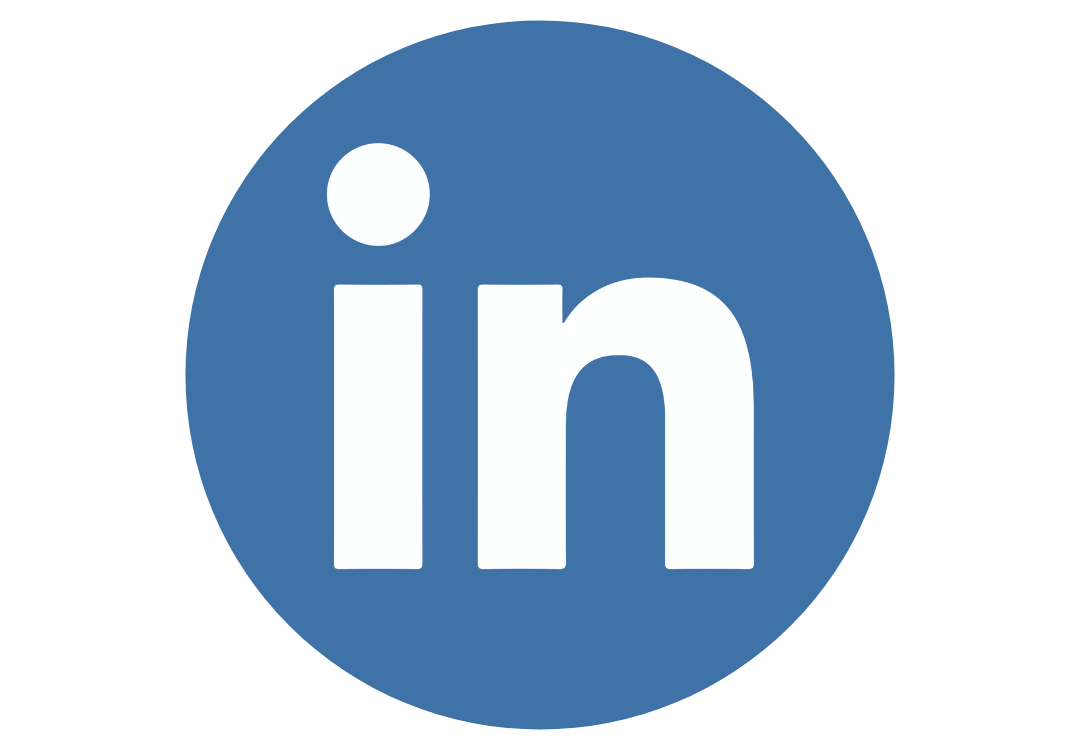Switzerland (Head Quarters)
IDR Medical Switzerland
Austrasse 95, CH-4051 Basel, Switzerland
T:
+41 (0) 61 535 1109
UK
IDR Medical UK
Unit 104 Eagle Tower, Eagle Tower
Montpellier Drive, Cheltenham, GL50 1TA
T:
+44 (0) 1242 696 790
USA
IDR Medical North America
225 Franklin Street, 26th Floor
Boston, Massachusetts 02110, USA
T:
+1 (0) 617.275.4465

10 Tips to Ensure A Successful Customer Segmentation Project
In today's highly competitive med-tech market, it's important to understand your customers and cater to their specific needs.
IDR Medical has been at the forefront of the medical market research industry for over a decade. During this time, we have accrued invaluable firsthand experience, working with medical device and pharmaceutical companies on customer segmentation projects that drive business growth.

In this article, we’ll explore how customer segmentation works, how it can be used in the healthcare industry, and how you can succeed with your next customer segmentation market research project.
What is customer segmentation?
Customer segmentation is the process of dividing a customer base into smaller groups based on shared characteristics, such as demographics or behaviors. The goal of customer segmentation is to understand the needs and preferences of each group and tailor marketing and sales efforts to better meet these needs.
Before we look at tips on conducting a successful customer segmentation market research project, let's delve into the different types of customer segmentation.
Types of customer segmentation
Depending on the products and brand you are marketing, as well as the business decisions you need to make as a result of the research, one method of customer segmentation might prove more effective than another.
Here are some of the most common segmentation approaches:
Needs based segmentation
This is a way of segmenting customers into groups according to their different needs. These needs relate to the factors driving their decision-making when opting for a certain product or service.
Healthcare customers experience multiple needs that you can use to create segments, so it’s worth considering needs-based segmentation as a way of dividing customers into groups based on their highest priority needs (the problems they are most intent on solving).
Organizational segmentation
This is the segmentation of hospitals, clinics, or care providers based on specific attributes such as the patient population served, ownership (Public/Private), and organizational structure.
It is sometimes called macro-level segmentation and helps you identify specific healthcare organizations that align with your company’s offerings.
Geographic segmentation
Here, healthcare organizations are segmented based on their geographic location, from country to country or region to region.
A good grasp of the geographical attributes of customer segments helps you understand regional preferences and adapt your sales and marketing strategy accordingly.
Customer size segmentation
In this type of customer segmentation, healthcare organizations are segmented based on their size, for example, small and medium-sized hospitals versus large enterprises.
Some of the factors considered here are the number of beds, annual revenue, whether the facility is a standalone facility or part of a hospital network / Integrated Delivery Network (IDN).
Customer segmentation by size helps tailor your sales, marketing, and support approaches to meet the needs of different-sized hospitals or health systems.
Purchase behavior segmentation
This involves segmenting customers based on their purchasing patterns, buying behaviors, procurement processes, or contract preferences.
This helps you to plan and tailor sales strategies, pricing models, and contract terms to align with the buying processes of the different customer segments.
Customer lifecycle segmentation
We can also segment customers based on their stage in the customer lifecycle. Are they prospects, existing loyal customers, existing churned customers?
Customer lifecycle segmentation enables businesses to develop targeted strategies for acquiring new customers, nurturing leads, retaining existing customers, and re-engaging lapsed ones.
Technology adoption segmentation
Technology adoption segmentation (technographic segmentation) involves segmenting hospitals and healthcare providers based on technology adoption and maturity levels.
It considers factors like early adopters, mainstream adopters, or laggards regarding technology implementation. With this information, businesses can tailor messaging, support, and implementation strategies to match the technology readiness of the different customer segments.
Healthcare customer segmentation projects can vary depending on the industry, market dynamics, and your specific business goals. Therefore, it is important to leverage available data, conduct research, and continuously refine segmentation approaches to align with the evolving needs of customers.
But why does this all matter?
Why customer segmentation is important in healthcare
Customer segmentation projects are used for several reasons. Some of the most common include the following:
- Targeted marketing
By understanding the unique characteristics and preferences of different customer segments, businesses can create targeted marketing campaigns. This ensures that messages and value propositions are more relevant to specific groups, increasing the likelihood of engagement and conversion. - Pricing
Segmentation allows businesses to implement pricing strategies that align with the willingness to pay off different customer groups. This can help maximize revenue and profitability. - Product development and innovation
Effective customer segmentation can guide healthcare product and service development efforts. By identifying the specific needs and desires of different customer segments, you can improve or tweak products and services to meet customer requirements. - Resource allocation optimization
For customer segments that are most profitable or have the highest growth potential, you can allocate marketing, sales, and operational resources in a way that maximizes return on investment. - Customer retention and loyalty
By identifying and addressing the unique needs of different customer segments, med-tech manufacturers can enhance customer satisfaction. Satisfied customers are more likely to remain loyal, reducing churn, and improving overall customer retention rates. - Market growth opportunities
Customer segmentation can uncover untapped market segments or niche audiences that medical device manufacturers can target. By identifying new customer groups with unmet needs or underserved markets, companies can develop strategies to enter and capture these segments, expanding their customer base and driving growth.
Successful customer segmentation requires research, analysis, and strategic decision-making. It is an ongoing process that should be periodically reviewed and adapted to changing market conditions and customer dynamics.
How to plan a successful customer segmentation project
There are some tips to ensure the success of your next customer segmentation market research project:
1. Set clear objectives
Define the specific goals and objectives of your segmentation project.
Focus on the business decisions you need to make as a result of the research, and what data is required to facilitate this. The goals should be simple, clear, and your team should be aligned with the expected outputs of the research and how it will be used.
2. Gather background data and hypothesis
Collect relevant data about your customers that may help inform the segmentation criteria the project needs to consider.
Ensure that you leverage the knowledge of your local markets to establish segmentation hypotheses that can be validated through the research process.
If you are using the outputs of the market research to inform a market sizing or forecast model, you will also need to identify data sources that will enable you to extrapolate the market research findings to the wider market.
3. Determine segmentation criteria
This is a critical step in the process, as it will determine the criteria that can be used to analyze the data collected from the market research. At this stage in the process, it may be valuable to conduct a qualitative phase of market research to validate that the project is focusing on the most relevant variables/criteria.
4. Determine the market research sample
For manufacturers of medical devices and pharmaceutical products, this process is not always straightforward. Decision making is typically committed based, involving multiple stakeholders, complex buying pathways and long lead times.
The sample often needs to consider that the users or prescribers of the product are separate from those driving the commercial decision to adopt the technology and designed with this in mind.
Identify the specific characteristics, such as demographics, behaviors, product usage, and purchasing habits, that define your target population, which can be used to inform the recruitment screener.
Calculate the appropriate sample size required to achieve statistical significance. The sample size depends on factors such as the level of accuracy you desire, the confidence level, and the variability within the population.
You must ensure your sample is diverse and representative of the target population or consider using weighting techniques to adjust for imbalances.
5. Select data collection methods
Determine the most appropriate data collection methods for your research.
Consider factors such as the nature of the research objectives, the depth of information needed, and the available resources when choosing data collection methods.
Most of our segmentation projects involve 2 phases of research; a qualitative phase to establish hypotheses and align the segmentation variables, and a quantitative phase (typically a web survey) to validate the hypothesis and quantify the opportunity represented by each segment (please see step 3).
6. Pilot testing
Conduct a pilot test of your research instruments and methods on a small sample before conducting the full-scale study. This helps identify potential issues, such as unclear questions, survey design problems, or logistical challenges, which can be addressed and resolved before a full launch.
7. Analyze and interpret results
Use statistical analysis or data mining techniques to segment your customer data. Explore patterns, correlations, and similarities within the data to identify distinct customer groups.
You can employ various analytical methods, such as clustering algorithms, regression, or factor analysis, to derive meaningful segments.
There are several data analysis tools available for customer segmentation. Here are some popular ones:
- Excel: It offers basic data manipulation, filtering, and sorting capabilities. You can use Excel's functions, such as VLOOKUP and PivotTables, to perform segmentation based on various customer attributes.
- Tableau: Tableau is a powerful data visualization tool that can also be used for customer segmentation. It lets you connect to different data sources, create interactive visualizations, and perform advanced analytics. With Tableau, you can explore customer data visually and identify segments based on different dimensions.
- SPSS: is a comprehensive statistical analysis software that includes tools for customer segmentation. It provides a range of techniques, such as clustering, factor analysis, and decision trees, to identify distinct customer segments. SPSS also offers data visualization capabilities to interpret and present the segmentation results.
- RapidMiner: RapidMiner is a data science platform that supports customer segmentation analysis. It provides a drag-and-drop interface for building analytical workflows. With RapidMiner, you can preprocess customer data, apply clustering algorithms, and evaluate the segmentation results using various performance metrics.
- R with packages: R is another programming language commonly used for statistical analysis. It has several packages, such as dplyr, cluster, and ggplot2, that are useful for customer segmentation. R provides various statistical methods and visualization options to explore and segment customer data.
These tools offer different functionalities and capabilities, so the choice depends on your requirements, data volume, and level of expertise. It's recommended to evaluate the features, ease of use, and scalability of each tool before making a decision.
8. Define segment profiles
Once you have identified customer segments, develop detailed profiles for each segment. Describe their characteristics, behaviors, needs, preferences, and motivations. This step helps you understand each segment's unique traits and tailor your marketing strategies accordingly.
9. Develop marketing strategies
Create customized marketing strategies for each segment. Craft targeted messaging, promotions, product offerings, and customer experiences that resonate with the specific needs and preferences of each segment. Tailor your communication channels and marketing tactics accordingly.
For the best outcomes, you need to create specific plans for each segment, making communication with them highly personalized and customer-centric.
10. Implement and monitor
Put your segmentation strategies into action across your marketing channels. Track and measure the effectiveness of your strategies by monitoring key performance indicators (KPIs) like customer acquisition, conversion rates, customer satisfaction, and revenue growth.
Continuously refine and adjust your strategies based on the feedback and insights gained from monitoring.
Remember that customer segmentation is not a onetime activity. It requires continuous refinement and adaptation as you gain more insights and the market evolves. Regularly review and update your segmentation strategy to ensure its relevance and effectiveness in meeting your business goals.
How do you decide which one will work best for your business? IDR Medical can help you answer these questions and conduct segmentation research to communicate the added value of your product, service, or medical devices more effectively.
To achieve segmentation research success, you can learn more about quantitative research methods by downloading our guide.
Make customer segmentation actionable with IDR Medical
Customer segmentation isn’t simply a way to group customers; it is a way to understand them better and fulfill their needs more effectively. Leveraging the gained knowledge and data from your customer segmentation project, you’ll benefit your product, service, or medical devices and improve revenues.
'There are many different ways of segmenting customers; how do I decide which will work best for my business?'
With IDR Medical's expertise as a global leader in medical market research, we provide service solutions and consultancy for the world’s leading medical device and pharmaceutical companies. We will help you:
- Develop segment-specific strategies
- Implement and monitor results
- Communicate and involve stakeholders



